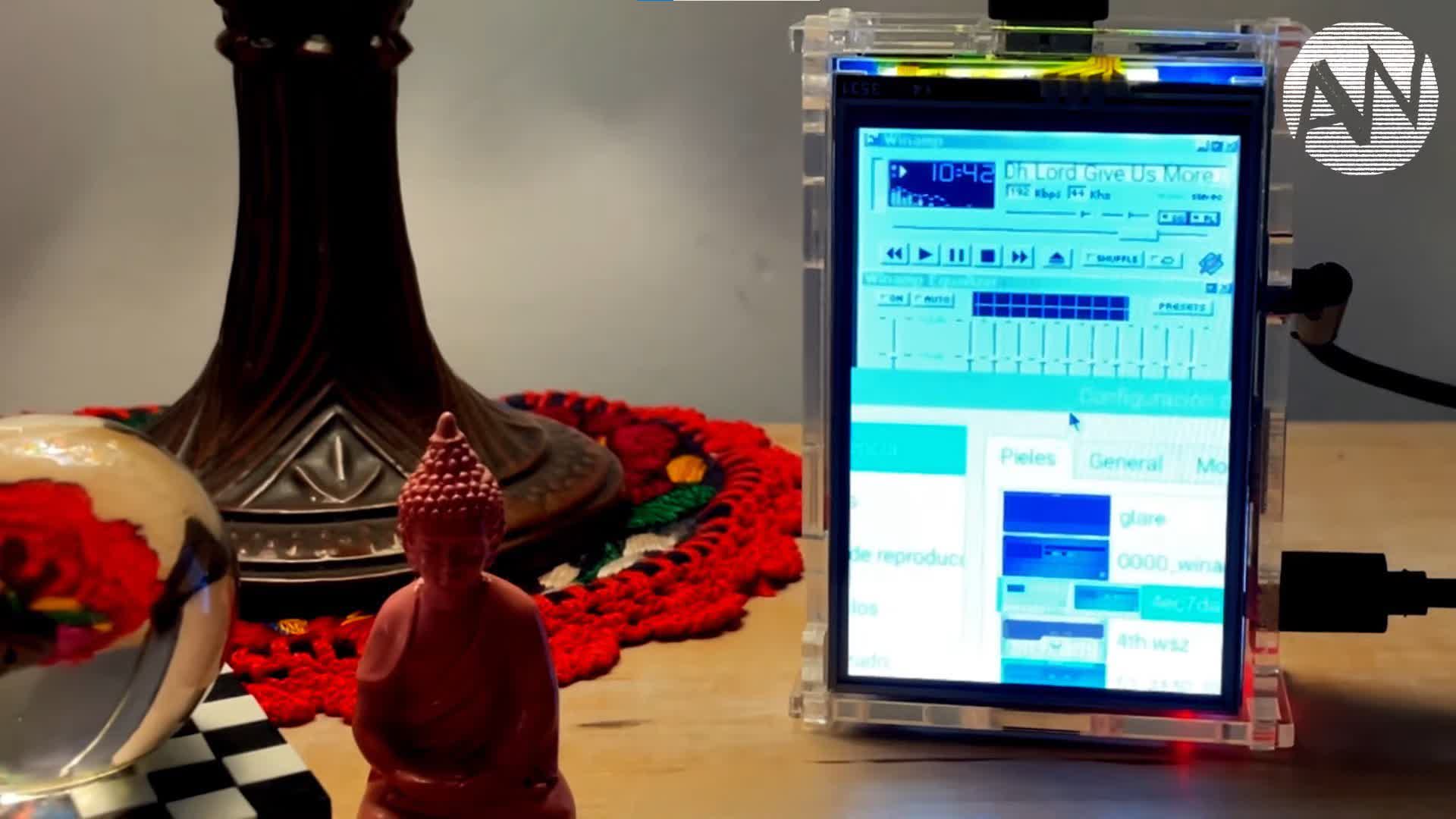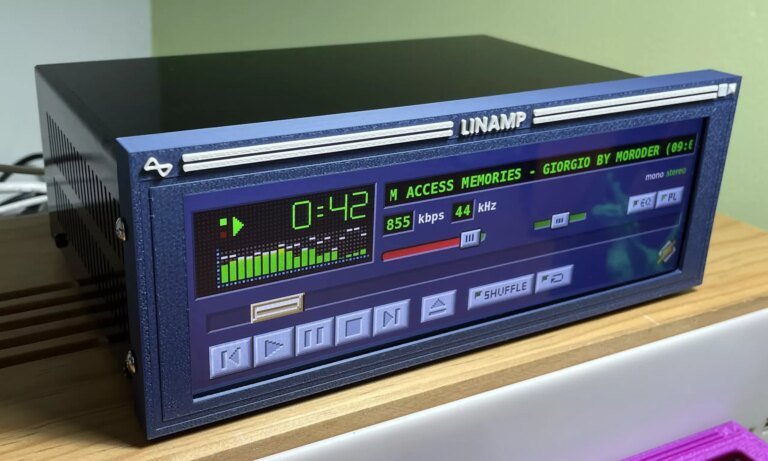The big picture: Teens and young adults from the late 1990s will remember Winamp as the de facto music player for Windows PCs. If you like tinkering and building with electronics, give Linamp a try. It brings Winamp into the physical dimension and lets you touch a piece of this history. Taking something old and breathing new life into it is a testament to human passion and creativity.
Winamp was released for Windows in 1997, just as MP3s were starting to become mainstream. Standout features include Winamp’s unique interface with dynamic spectrum bars and the ability to change skins (themes). And let’s not forget the distinctive startup sound you can hear here. Winamp’s popularity was short-lived, as it was acquired by AOL in 1999 and Apple’s iPod and iTunes products exploded in popularity in the early 2000s.
Hobbyist Rodmg recreated the look and feel of Winamp as Linamp, a physical media player with roots in the audio boxes of the 1990s. Linamp is powered by a Raspberry Pi 4B with a 32GB SD card. It has a 7.9″ touch screen, a 3.5mm headphone jack, two USB ports (Type-A and Type-C), and an Ethernet port. Rodmg used PCBWay to machine the 1mm outer aluminum shell and 3D printed the faceplate in homage to Winamp’s default skin.
Also see: Whatever Happened to Winamp?
For retro music fans, Linamp can play music from a local SD card or a connected CD player. Supported digital codecs include MP3, MP4, and FLAC. Rodmg has expressed interest in introducing modern quality-of-life features such as Bluetooth and Spotify streaming support in the future.

If this project is beyond your skill level, there are alternatives.
AudioWanderer recently showed off Raspinamp, a less glamorous but still functional project: a Winamp-themed physical MP3 player that runs on a Raspberry Pi. If you want to work with the source code, you’ll have to wait until September 2024, at which point it will be open source. I’m looking forward to running Winamp on my FreeBSD media system.


